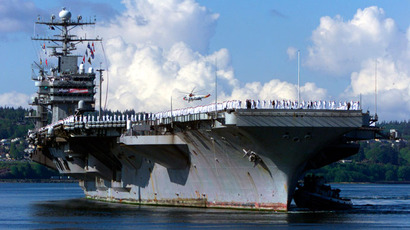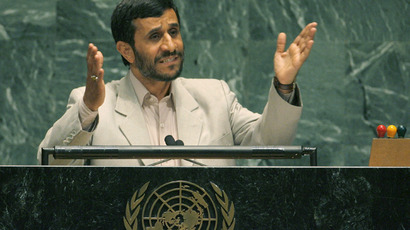Iran ‘has tripled’ uranium-enriching centrifuges at Natanz plant

Iran has tripled the number of advanced uranium enrichment centrifuges at its Natanz underground plant, to more than 600 in the past three months. The equipment could be used in a nuclear weapons program, diplomats said on Wednesday.
They added that the machines – which total more than 600 - are
not yet producing enriched uranium and some may only be partially
installed.
Two of the diplomats told AP that International Atomic Energy
Agency (IAEA) experts visiting the site were also uncertain about
their operating ability, because they were not permitted to get a
close enough look.
Western countries skeptical of Iran’s nuclear intentions have
already raised concern that the machines would enable Tehran to
speed up atomic activity. The US and its allies have accused Iran
of using its nuclear program to develop nuclear bombs.
“It is clear Iran can build them. The question is how many and how
good are they,” a Western envoy told Reuters.
Despite claims from the US and its allies, the Islamic Republic
insists it has no interest in nuclear weapons, and says it’s
enriching uranium for purely peaceful purposes, such as nuclear
power. Tehran also maintains it has a right to do so under
international law.

Iran announced last month that it would build around
3,000 advanced centrifuges, refusing to bow down to Western pressure to curb its uranium enrichment.
Although Tehran is still far off its target number, a diplomatic source estimated that 500-600 so-called IR-2m centrifuges and empty centrifuge casings had now been put into place at the Natanz facility.
The number of centrifuges that Iran can make depends on whether it has all the necessary parts and materials, according to nuclear expert Mark Hibbs of the Carnegie Endowment think-tank.
“It is possible they have accumulated an inventory of these things,” he told Reuters.
Meanwhile, tensions continue to boil between the US and Iran, as Washington continues to threaten Iran with sanctions.
“The United States and the international community remain committed
to maintaining pressure on the Iranian regime until it fully
addresses concerns about its nuclear program,” US Secretary of
State John Kerry said in a statement last month.
“The message to the Iranian regime from the international community is clear: take concrete actions to satisfy the concerns of the international community, or face increasing isolation and pressure,” he said.
Israel has been just as aggressive with its threats, refusing to rule out the possibility of a military strike against Iran.
On Tuesday, Israeli Prime Minister Benjamin Netanyahu reiterated his position, saying that
“tough sanctions” currently imposed on Iran might not be enough to prevent it from obtaining nuclear weapon capabilities.

His thoughts were echoed by Defense Minister Moshe Yaalon, who called Iran’s nuclear program
“the most significant threat” to the world.
“The Western states must understand that only assertive action will curb the threat. Only forcing the Iranian regime to choose between a bomb or survival will bring Iran to halt the project,” he said.
Earlier on Tuesday, Israeli Chief of Staff, Lieutenant General Benny Gantz, said the country’s military was capable of attacking Iran on its own without foreign support.
When asked in a public radio interview if the military could target Iran alone - without the support of countries such as the United States - Gantz replied,
“Yes, absolutely.”“We have our plans and forecasts...if the time comes we’ll decide” on whether to take military action, he said.
Also on Tuesday, a US senate committee passed Resolution 65, stating that the country will authorize the usage of military force to Israel in
“defense of its territory, people, and existence.” The bill also states that the US is committed to lending diplomatic and economic support to Israel.
Iran and a group of international negotiators known as the P5+1 held their latest round of nuclear talks in Kazakhstan earlier this month. However, the meeting failed to produce a breakthrough.
Russian Deputy Foreign Minister Sergei Ryabkov said after the talks that Moscow is against the West's unilateral sanctions on Iran, calling this stance














